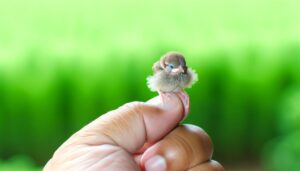How to Know if a Baby Sparrow is a Girl
To determine if a baby sparrow is a girl, observe its physical features and plumage patterns. Female sparrows display subdued, earthy tones with uniform brown tail feathers and less defined wing markings.
Their beaks are duller compared to males. Behaviorally, females are nurturing, often preening and staying close to the nest.
They emit soft, monotonous calls. Expert consultation, involving DNA testing or detailed morphological analysis, provides the most accurate identification.
Monitoring these characteristics closely helps in gender determination and offers further insights into sparrow biology and behavior. Continue to explore these traits for more detailed identification methods.
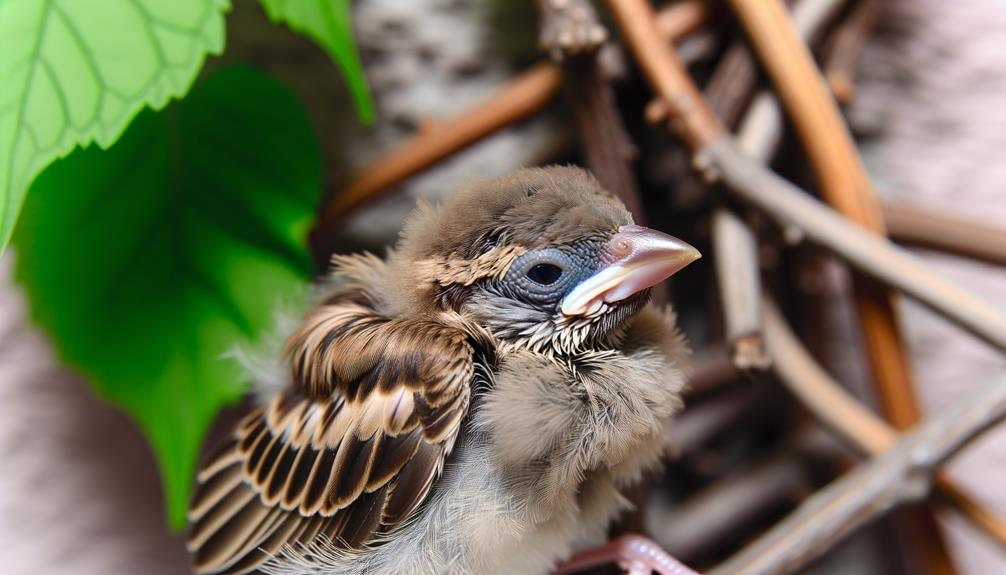
Key Takeaways
- Female baby sparrows have subdued, earthy tones for camouflage.
- Female sparrows display dull brown feathers with gray undertones and less defined wing markings.
- Female sparrows' beaks are usually duller in color compared to males.
- Female sparrows produce monotonous, soft calls with less variation.
- Female sparrows exhibit nurturing behaviors like preening and staying close to the nest.
Observing Physical Features
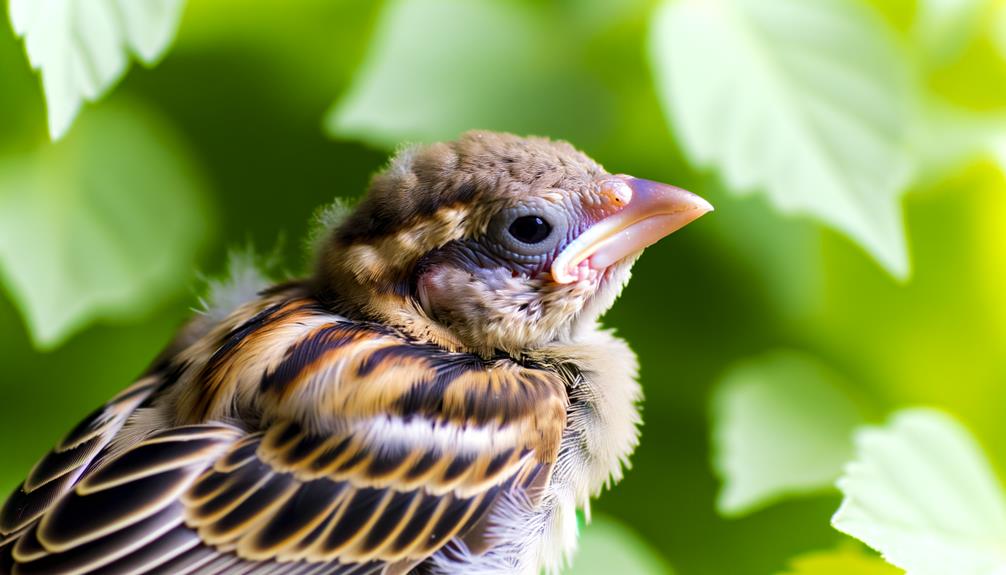
While observing physical features, you'll notice that male and female baby sparrows often exhibit distinct differences in feather coloration and patterns.
Females typically have more subdued, earthy tones, such as browns and grays, making them less conspicuous.
Males, even as juveniles, start showing hints of brighter colors like white and black, particularly around the head and chest areas.
Pay close attention to the beak color as well; females usually have a more consistent, duller shade compared to males.
Detailed observation of these physical traits can provide valuable insights when determining the gender of a baby sparrow.
This analytical approach will help you serve others by ensuring accurate identification, which is essential for conservation, research, and educational purposes.
Examining Plumage Patterns
When examining plumage patterns, you'll find that the arrangement and coloration of feathers can provide significant clues about the gender of a baby sparrow. Female sparrows typically have more subdued and consistent plumage compared to males.
| Characteristic | Female Sparrow |
|---|---|
| Feather Coloration | Dull brown with gray undertones |
| Wing Markings | Less defined, more uniform |
| Chest Patterns | Subtle streaks |
| Tail Feathers | Uniform brown |
Analyze the feather coloration, particularly on the chest and wings. Females often exhibit more uniform, less vivid patterns, aiding in camouflage. The subtle streaks on the chest and the uniform brown tail feathers are telltale signs. By focusing on these plumage characteristics, you can improve your ability to identify the gender of baby sparrows accurately.
Monitoring Behavioral Traits
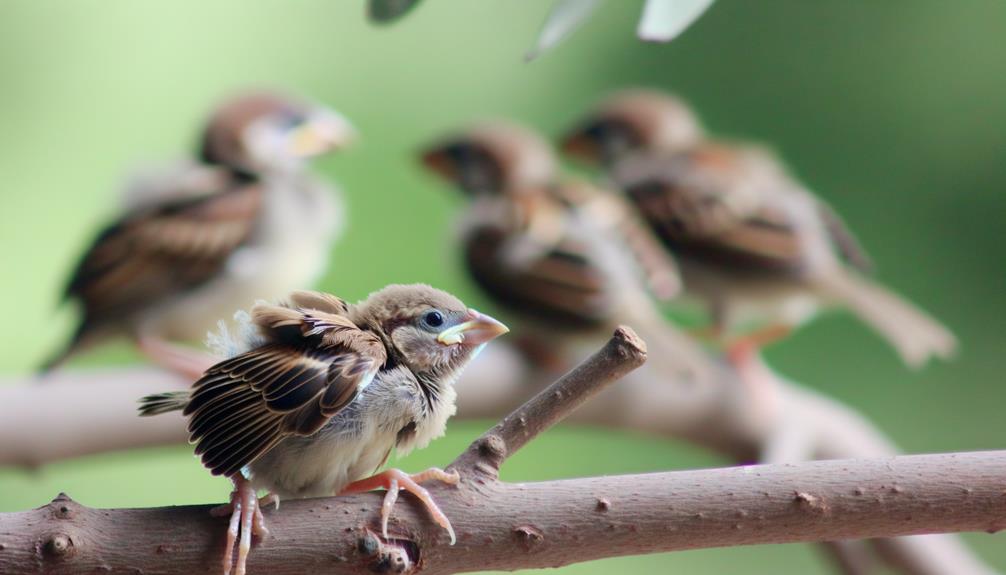
Observing behavioral traits can provide insightful clues about the gender of a baby sparrow, as males and females often exhibit distinct patterns of activity and interaction.
You'll notice that male sparrows tend to be more territorial, often engaging in assertive behaviors to establish dominance. They might also be more proactive in exploring their surroundings.
Female sparrows, on the other hand, typically display more nurturing behaviors, such as engaging in preening and staying close to the nest. They're often less aggressive and more cooperative in group settings.
Monitoring these specific traits over time allows you to gather data and make informed decisions about the bird's gender, ultimately aiding in better care and understanding of these delicate creatures.
Listening to Vocalizations
Listening to the vocalizations of baby sparrows can provide essential insights into their gender, as males often emit more frequent and varied calls compared to females. Observe the following characteristics:
| Observation | Male Sparrow | Female Sparrow |
|---|---|---|
| Call Frequency | High | Low |
| Call Variety | Diverse | Monotonous |
| Vocal Patterns | Complex | Simple |
| Response to Stimuli | Immediate | Delayed |
| Volume | Loud | Soft |
Detailed auditory monitoring can reveal these distinctions. Males typically exhibit higher call frequency and complexity, responding rapidly to environmental stimuli. Conversely, females tend to produce simpler, softer calls with less variation. Through precise and consistent observation, you can gather valuable data to identify gender, ultimately aiding in appropriate care and understanding of these delicate creatures.
Consulting an Expert
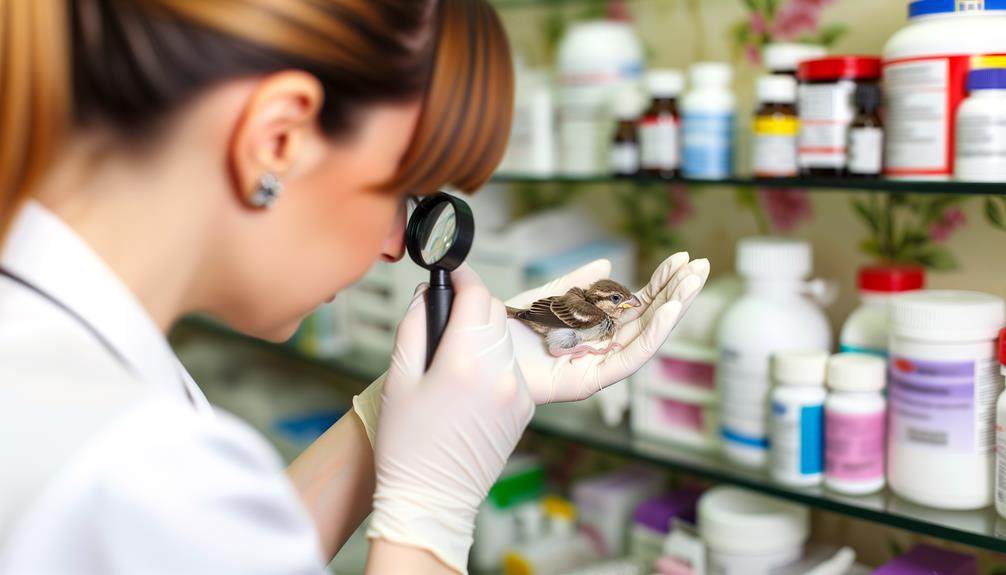
For a more definitive determination of a baby sparrow's gender, consulting an ornithologist can provide expert analysis beyond auditory observations.
Ornithologists utilize advanced techniques such as DNA sexing, which involves collecting and analyzing a feather or blood sample. They can also perform a thorough physical examination, looking for subtle morphological differences that aren't easily noticeable to the untrained eye.
By leveraging their specialized knowledge and tools, they can offer a level of precision that surpasses basic observation methods. Additionally, engaging with an expert ensures that the sparrow is handled safely and ethically, which is essential for its well-being.
This analytical approach not only aids in accurate gender identification but also contributes to broader ornithological research and conservation efforts.
Conclusion
When examining baby sparrows, you've learned to observe physical features, plumage patterns, behaviors, and vocalizations. While these methods are insightful, consider that experts identify the sex of sparrows with 95% accuracy through DNA testing.
Envision this: a sparrow's delicate feather contains a world of genetic information waiting to be uncovered. By combining your keen observations with expert analysis, you'll deepen your understanding and appreciation of these fascinating birds. Trust the science and your analytical skills to reveal nature's secrets.


